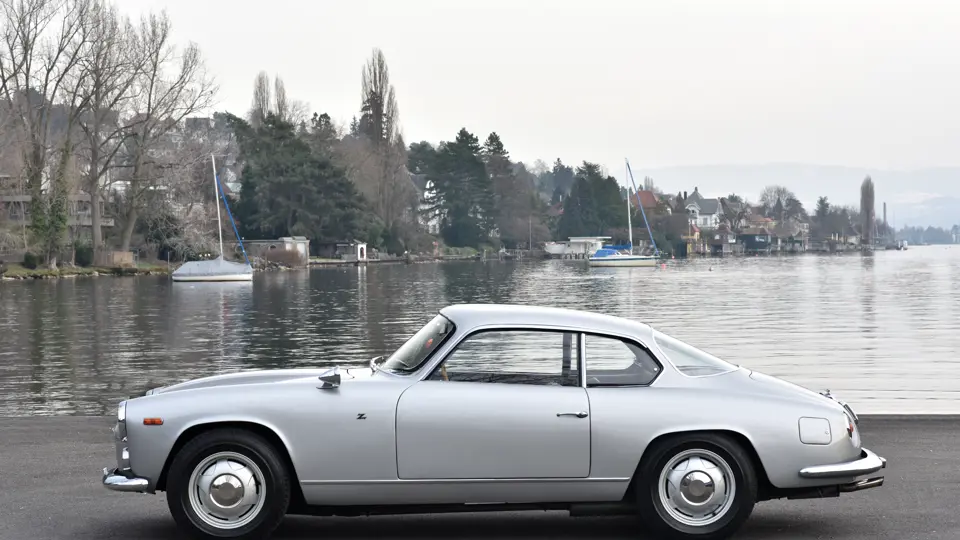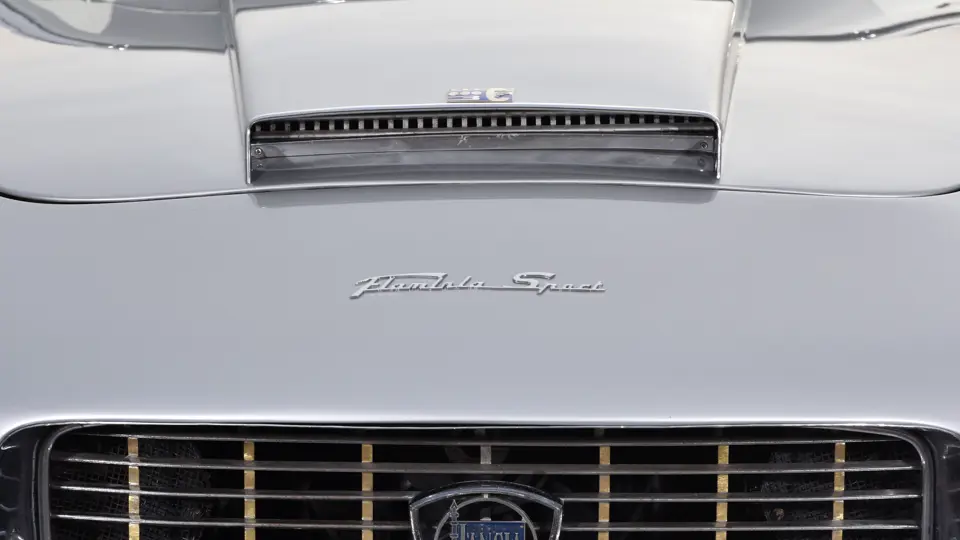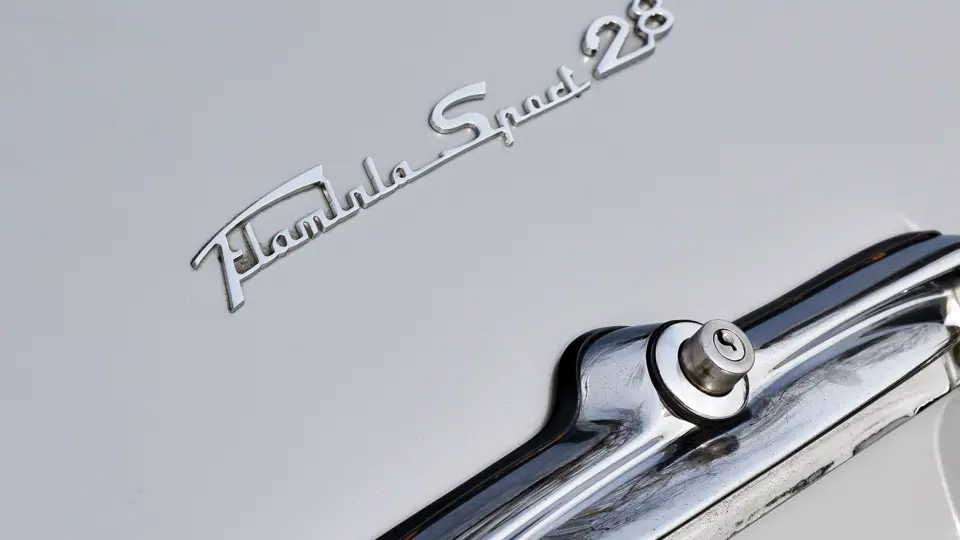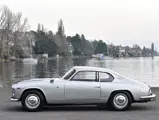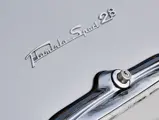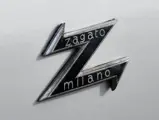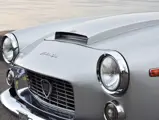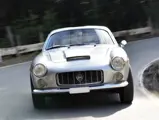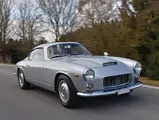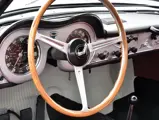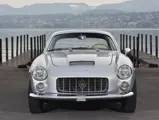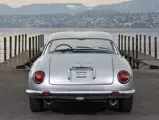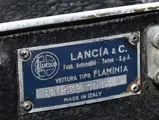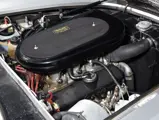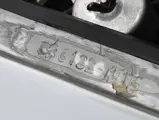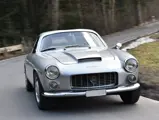
1963 Lancia Flaminia Sport by Zagato
{{lr.item.text}}
€280,000 EUR | Sold
{{bidding.lot.reserveStatusFormatted}}
- Correct and original triple-carb, 2.8-litre engine
- One of 33 examples in this configuration
- Well-maintained older restoration; recently serviced
- Rarrissima versione a 3 carburatori originali e motore da 2,8 litri
- Una di 33 esemplari in questa configurazione
- Macchina già restaurata in passato e ben mantenuta; revisionata di recente
150 bhp, 2,775 cc V-6 engine with three Weber 35DCNL double-downdraft carburettors, four-speed manual rear transaxle, double-wishbone front suspension, De Dion rear suspension, and four-wheel disc brakes. Wheelbase: 2,520 mm
150 cv, motore 6 cilindri a V da 2.775 cc, tre carburatori doppio corpo Weber 35DCNL, cambio manuale transaxle a 4 velocità, sospensioni anteriori a quadrilateri deformabili, ponte De Dion al posteriore, 4 freni a disco. Passo: 2.250 mm
Following Lancia’s reorganisation in 1955, the Flaminia line was introduced as the successor to the legendary Aurelia. It entered production in 1957 and not only employed an updated version of the DeVirgilio V-6 and rear-mounted transaxle but also adopted an unequal-length double-wishbone front suspension to replace the sliding pillar front suspension Lancia had used since the 1922 Lambda. These modifications endowed the Flaminia with refinement and poise and served as the basis for a broad model range. In addition to the factory-built berlina, Flaminias also were available as a coupé from Pinin Farina, as the GT and GT Convertible from Touring, and in the form of a more sporting variant from Zagato.
The alloy-bodied Flaminia Sport debuted at the 1958 Turin Auto Show in 2.5-litre, 119-brake horsepower form, and it was one of Zagato’s most successful designs of the era, as it featured the carrozzeria’s classic rakish lines and double-bubble roof. Although production records are less than perfectly reliable, after an initial run of approximately 99 examples with faired-in covered headlights, the design was modified to accommodate the open vertical headlights, as seen here. In 1961, the 2.5-litre engine was updated with three Weber double-downdraft carburettors, increasing brake horsepower to 140, and in 1963, an enlarged triple-carb, 2.8-litre engine saw power increase to 150 brake horsepower. With its lighter weight, better aerodynamics, and longer final drive, the 2.8 3C Sport is a capable long-distance tourer.
Although not intended as an all-out racer, the Flaminia Sport saw some competition success in the hands of privateers, including overall victories at the 1960 and 1963 Coppa Intereuropa, class wins at the 1962 and 1963 Targa Florio, and a 2nd place finish on the 1961 Mille Miglia, an event that was regularly run at the time.
Chassis number 132-1013 is the 13th of 33 open-headlight Flaminia Sports with the desirable 3C 2.8-litre engine. Although Zagato built a total of 70 Sports (type 826.132) between 1963 and 1964, they later converted 37 of the cars to 2.8 3C SuperSport (type 826.232) specification, leaving only 33 in the original configuration.
This Lancia was originally sold to Dr Ursula Rohr-Dietschi in Solothurn, Switzerland, and registered on 26 November 1963. In August 1971, it was purchased from Dr Rohr-Dietschi by Dieter Storck, a Zurich architect. In the mid-1980s, it was acquired by B. Oppenheim Exclusive Automobiles, which sent the car to Bolzano and Grosseto in Italy for extensive mechanical and cosmetic work. Copies of the records and receipts reflect a full engine rebuild and complete restoration of the electrical system, as well as a complete strip and repaint of the original blue to its current silver metallic colour and a complete revision to the interior upholstery and carpets.
In 1985, the current owner, of Zollikon, Switzerland, acquired the car, and between 1990 and 1995, he had further mechanical and bodywork performed, which included the installation of a new exhaust system, brake and clutch work, and a body and interior restoration, where the body was re-sprayed in metallic silver and the interior was re-upholstered in dark red leather. Since then, the car has enjoyed regular and thorough maintenance, with extensive records being kept for the service and restoration of the carburettors, the fuel system, the heating system, the brake system, and regular service items. The Lancia has recently been driven by an RM Sotheby’s specialist, and she confirms that it starts up immediately and drives and handles beautifully on the open road.
This is a grand touring car in the genuine sense, as it is very comfortable and highly usable for numerous driving events.
A seguito della riorganizzazione della Lancia nel 1955, la Flaminia fu presentata come la succeditrice della ormai leggendaria Aurelia. La produzione di questo nuovo modello iniziò nel 1957: era caratterizzato da una versione aggiornata del motore V-6 DeVirgilio, cambio transaxle e sospensioni anteriori a quadrilateri deformabili sovrapposti di diversa lunghezza, che andavano a rimpiazzare quelle di tipo "a cannocchiale" con montanti telescopici, usate per la prima volta sulla Lambda del 1922. Queste modifiche dotarono la gamma Flaminia di un' eccellente dinamica di guida e costituirono la base tecnica per tutte le successive versioni di modello. Oltre alla versione berlina carrozzata dalla Fabbrica, la Flaminia era offerta in versione cupè ,disegnata da Pinin Farina, in versione GT e GT Cabriolet dalla Touring Superleggera e nella versione Sport, offerta dalla Zagato.
La prima serie della Flaminia Sport Zagato debuttò al Salone di Torino del 1958 ed era dotata di una carrozzeria in alluminio e un motore da 2,5 litri con 119 cavalli. Si trattava di uno dei disegni di maggior successo di Zagato, ed era caratterizzato da linee tese e dal tipico tetto a doppia gobba. Sebbene i dati di produzione non siano accurati, dopo una produzione iniziale di 99 esemplari con fari carenati, il disegno fu modificato per ospitare i fari verticali, senza carenatura, come sull'esemplare qui esposto.
Nel 1961 il motore da 2,5 litri fu dotato di tre carburatori Weber doppio corpo, aumentando così la potenza a 140 cavalli. La potenza del'auto fu poi portata nel 1963 a 150 cavalli attraverso l'adozione del motore da 2,8 litri con carburatori maggiorati. Con il suo peso ridotto, un basso coefficiente aerodinamico e un più lungo rapporto al ponte, la 2.8 3C Sport era una prestante gran turismo ideale per lunghi viaggi.
Sebbene non fosse stata inizialmente pensata come un'auto per le corse, la Flaminia Sport fu usata in gara da alcuni privati che raccolsero due vittorie assolute nelle edizioni della Coppa Intereuropa del '60 e '63, due vittorie di classe nelle Targa Florio del '62 e '63 e un secondo posto all'edizione 1961 della Mille Miglia, all'epoca un evento ancora organizzato regolarmente.
Il telaio numero 132-1013 è il tredicesimo prodotto dei 33 esemplari di Flaminia Sport con fari scarenati e dotati dell'ottimo motore 3C da 2.8 litri. Nonostante Zagato abbia costruito un totale di 70 auto con specifiche Sport (tipo 826.132) tra il 1963 e il 1964 e ne abbia poi modificate 37 di queste portandole nella versione 2.8 3C SuperSport (tipo 826.232), 33 rimasero nella configurazione originale.
Questa Lancia fu venduta orginariamente all Dottoressa Ursula Rohr-Dietschi di Solothurn in Svizzera, e fu registrata il 26 Novembre 1963. Nell'agosto del 1971 fu successivamente acquistata da Dieter Storck, un architetto di Zurigo. A metà anni '80 fu comprata da B.Oppenheim Exclusive Automobiles, che spedì la macchina a Bolzano e a Grosseto in Italia per un restauro completo alle parti meccaniche e alla carrozzeria. Le copie dei documenti e ricevute indicano un rifacimento completo del motore, un ripristino dell'impianto elettrico così come la riverniciatura dal colore blu originale all'attuale argento metallizzato e una rimessa a nuovo degli interni.
Nel 1985, l'attuale proprietario di Zollikon, Svizzera, comprò la macchina ed eseguì tra il 1990 e 1995 ulteriori lavori di restauro sulla meccanica e la carrozzeria della macchina, includendo anche l'installazione di un nuovo sistema di scarico, un rifacimento dei freni, della frizione, e degli interni in pelle rosso scuro e della carrozzeria, ridipinta nello stesso argento metallizzato. Da allora, la macchina ha goduto di una manutenzione regolare ed accurata, documentata dettagliatamente per i lavori di restauro e servizio eseguiti sui carburatori, pompe e linee del carburante, all'impianto di riscaldamento e frenante e di ogni altro singolo componente. Questa Lancia è stata testata recentemente da una specialista di RM Sotheby's, che ha potuto confermare l'avviamento immediato del motore e l'ottimo comportamento su strada.
Quest'auto è una genuina gran turismo, molto confortevole e consente un grande utilizzo per numerosi eventi dedicati alla guida.

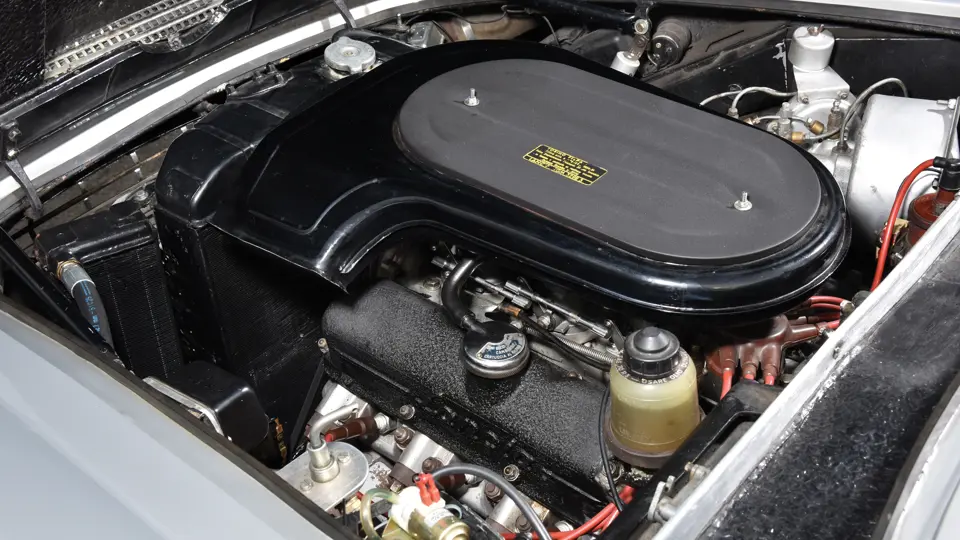


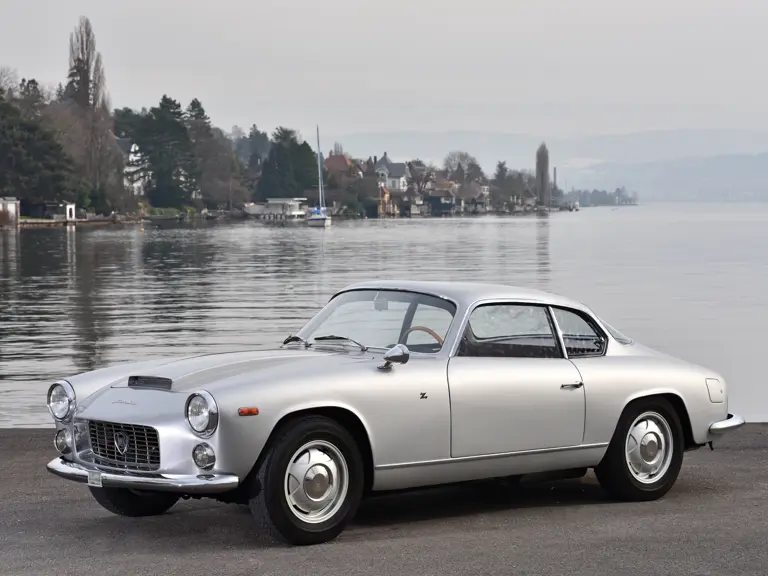
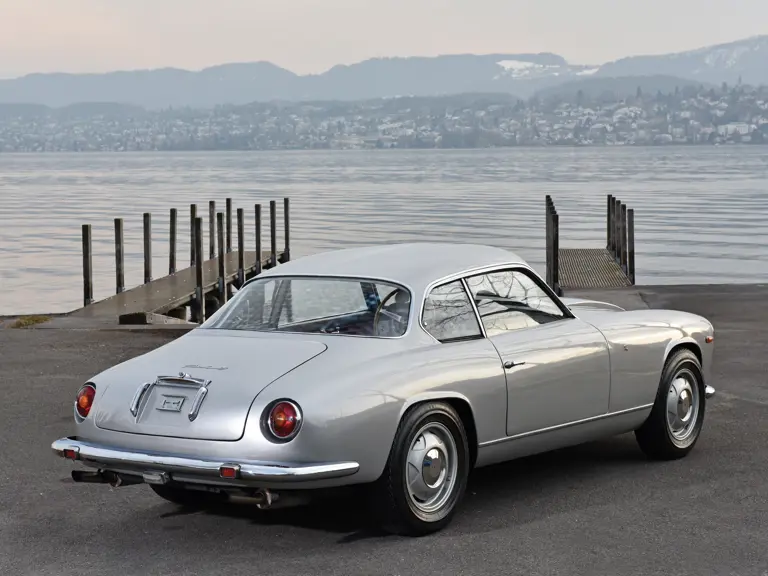
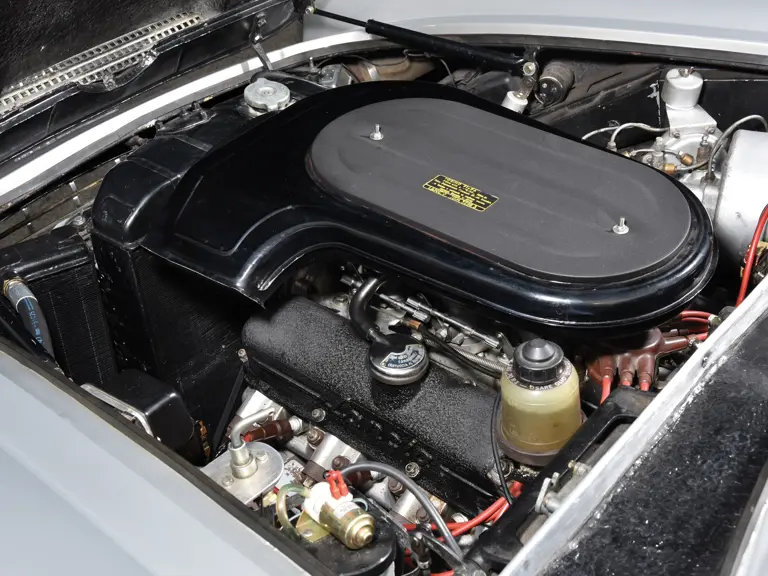
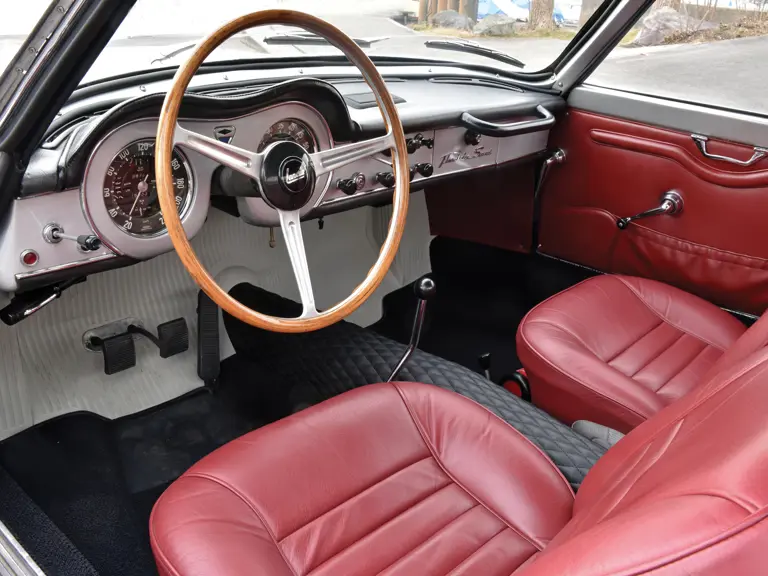
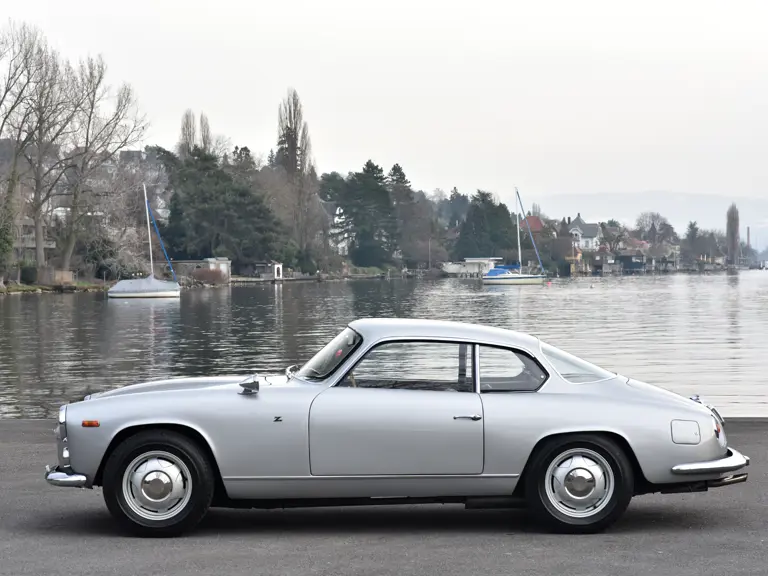
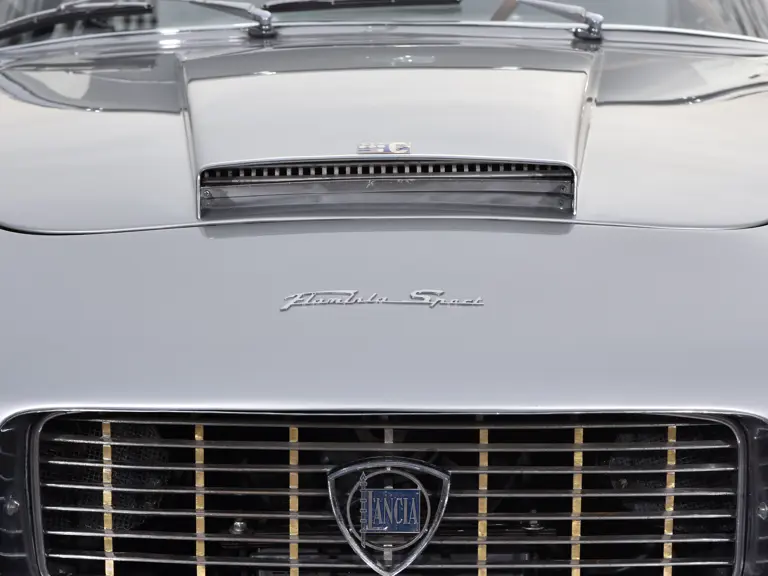
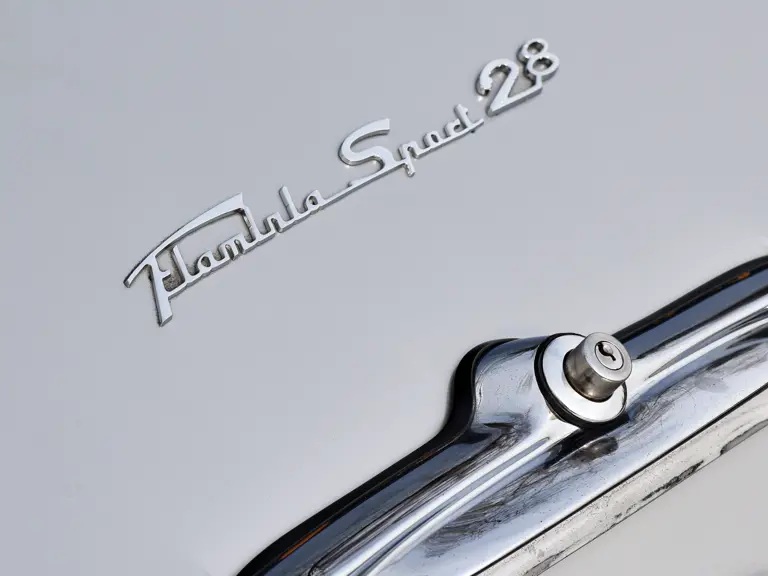

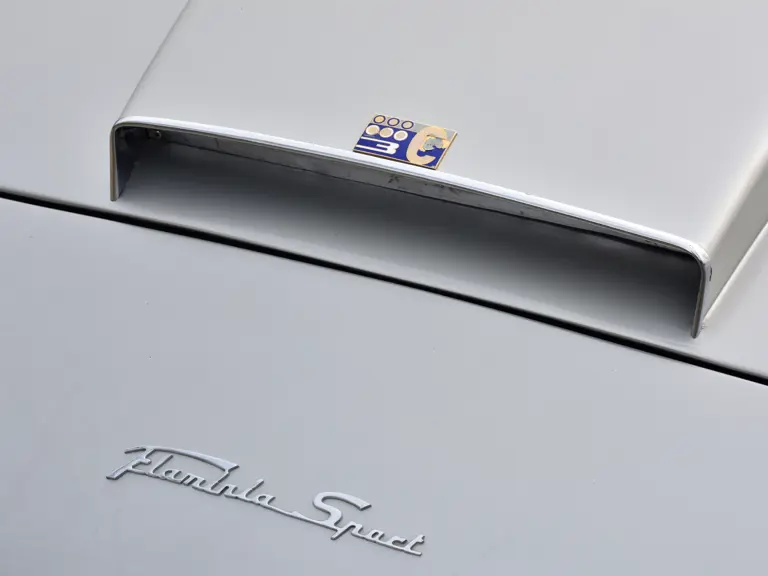
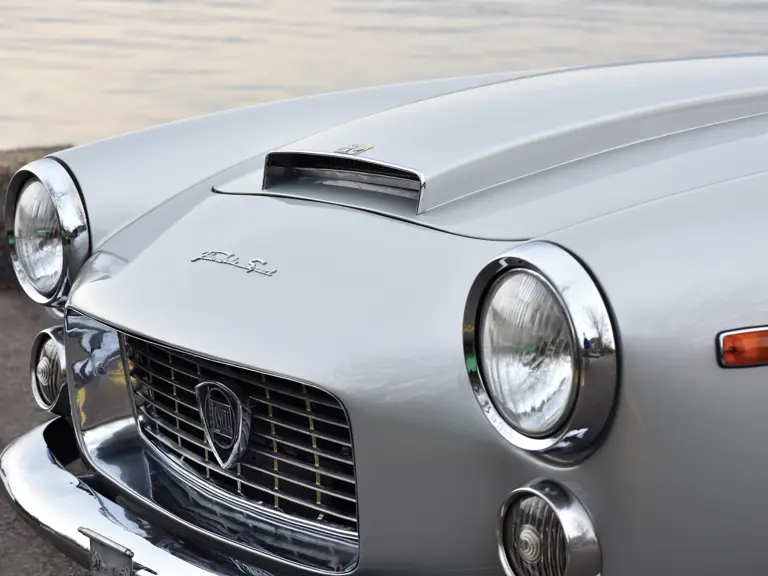
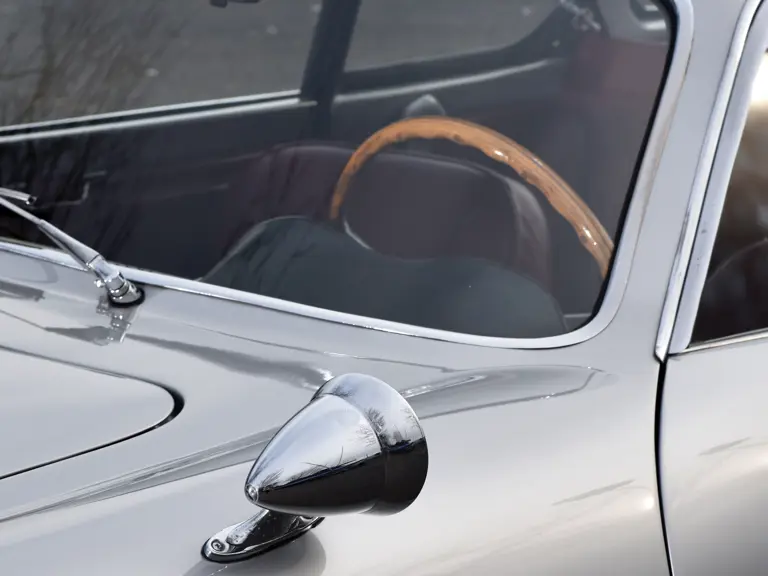
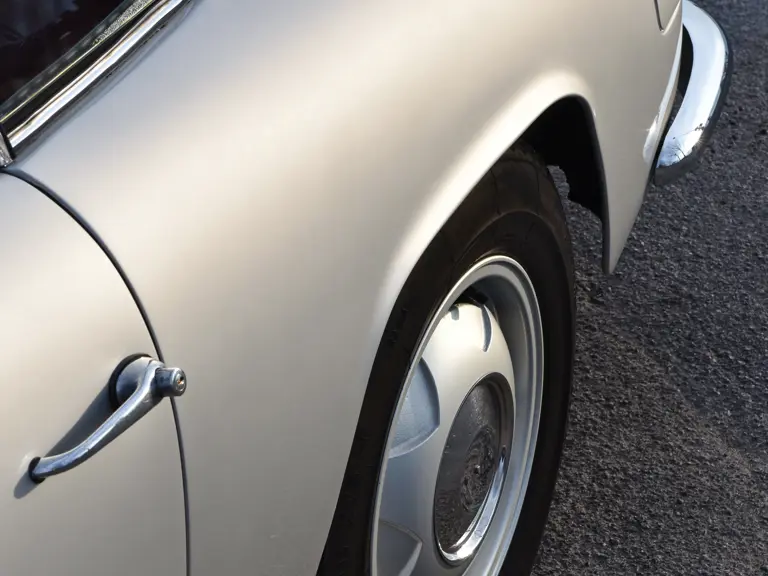

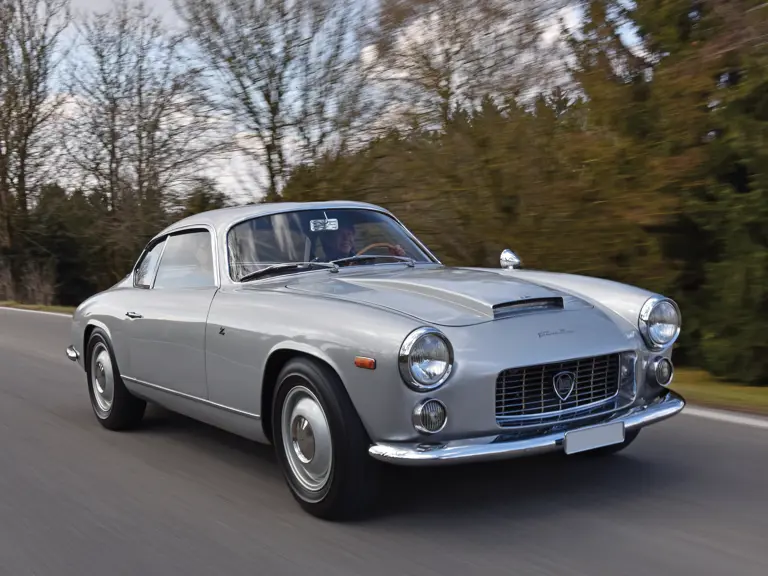
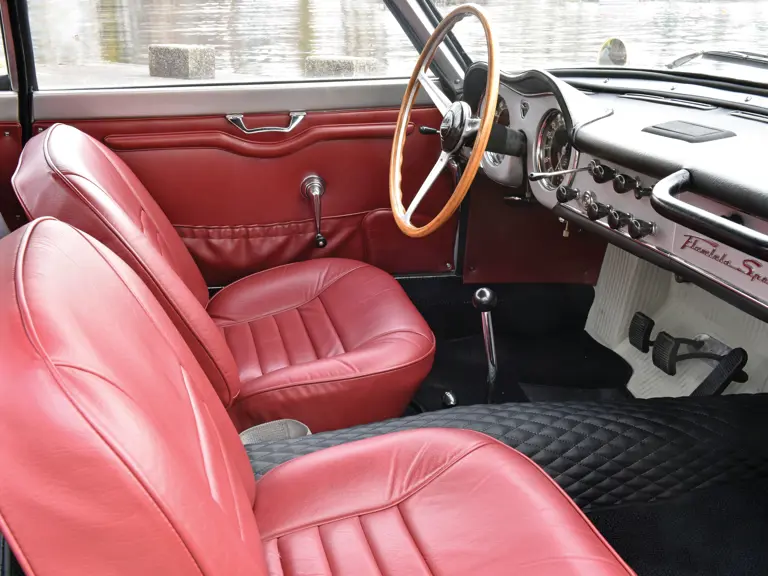
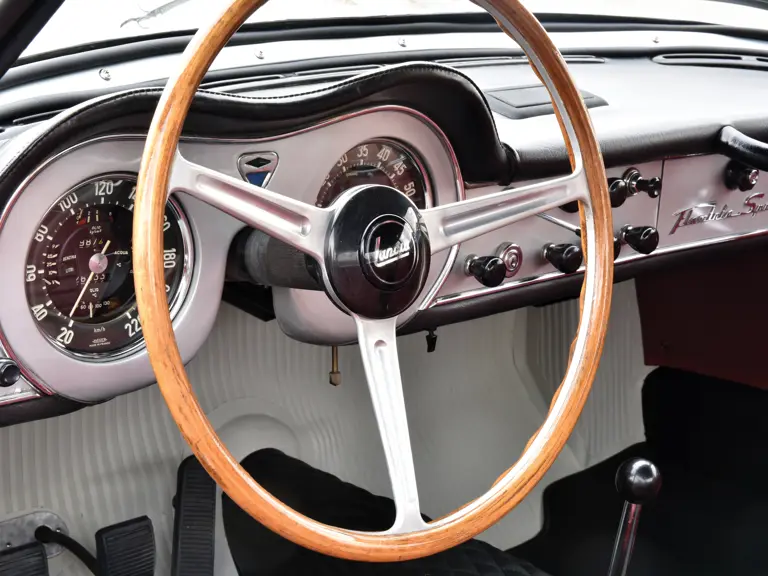
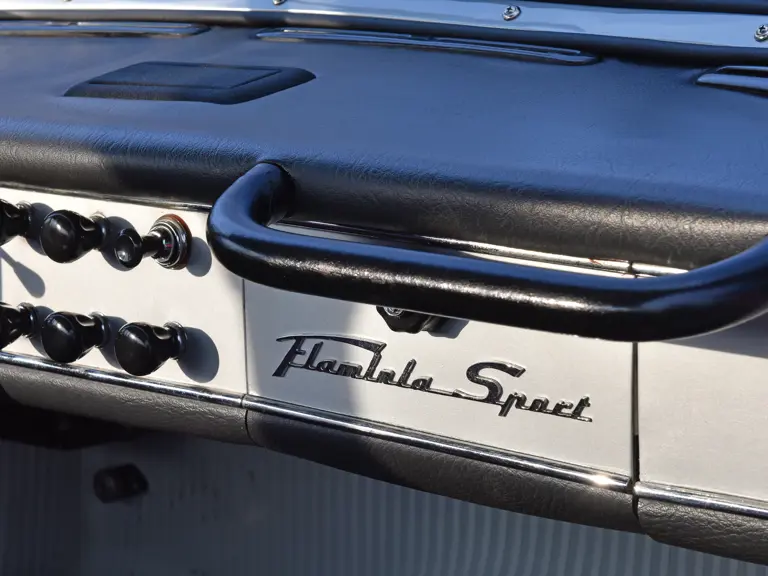
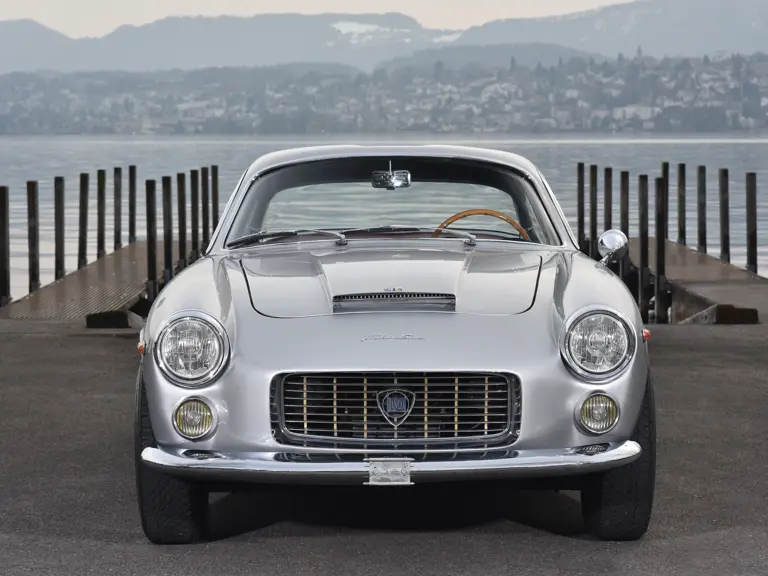
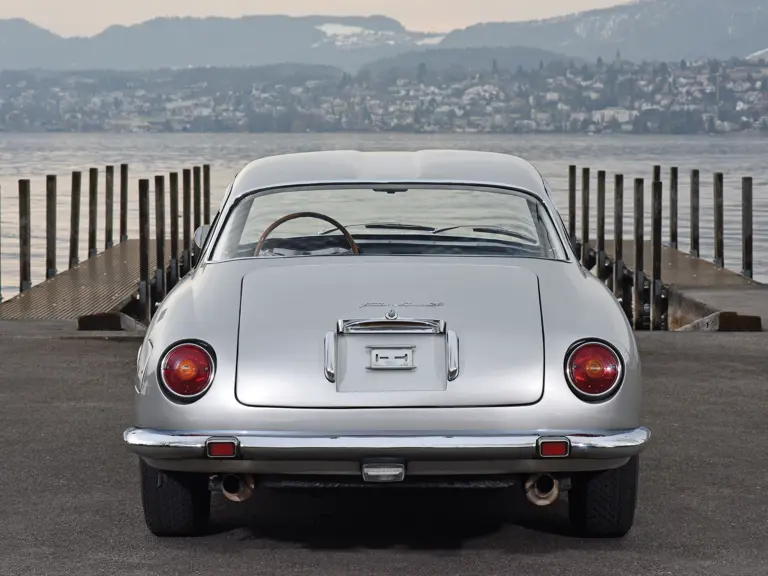
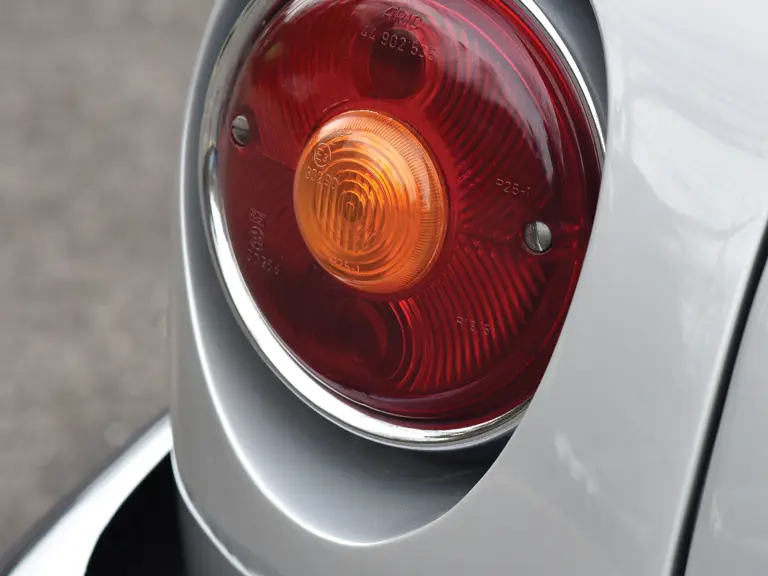
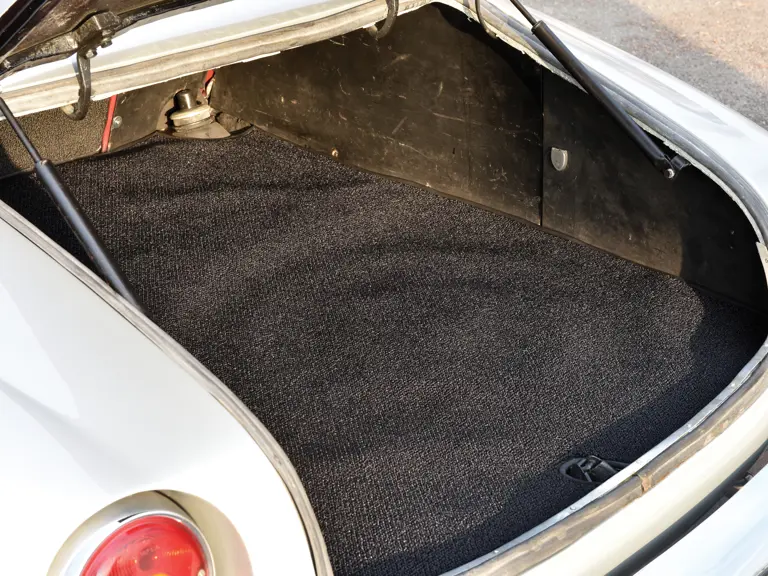
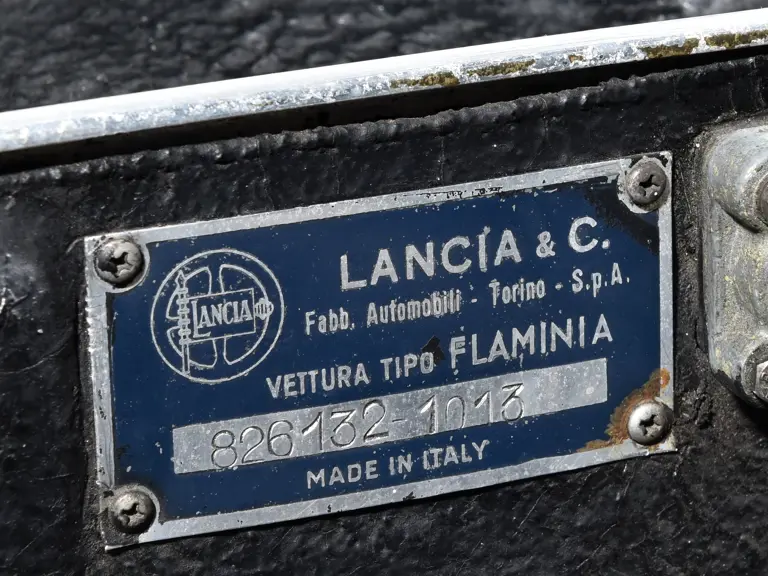
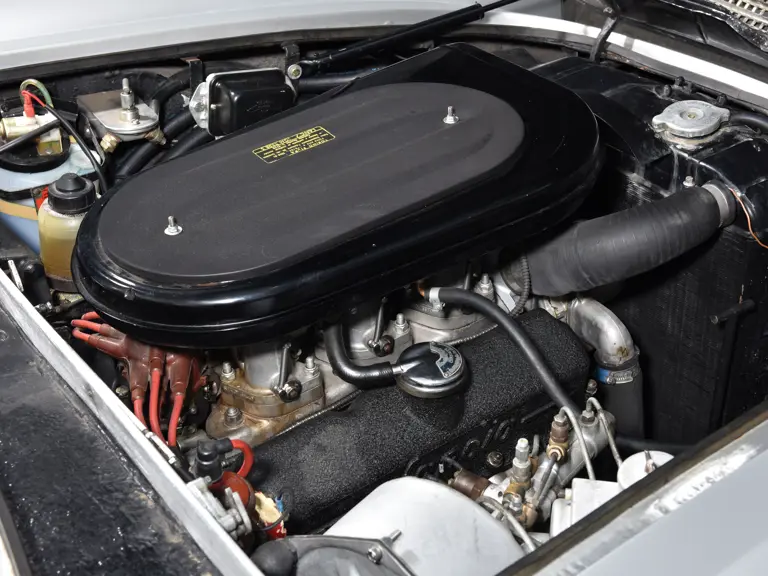
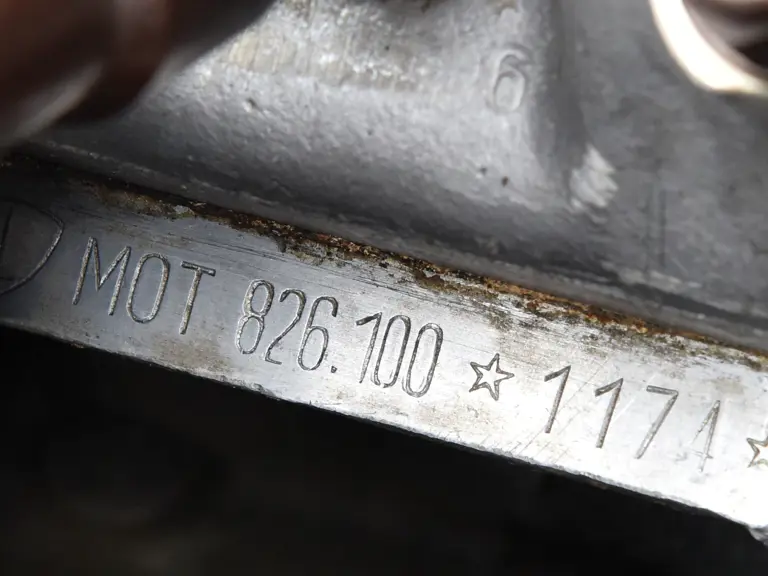
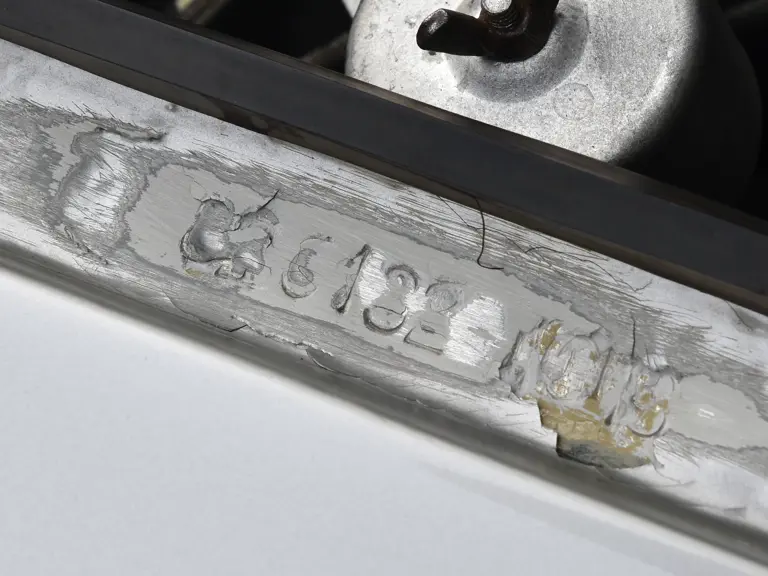
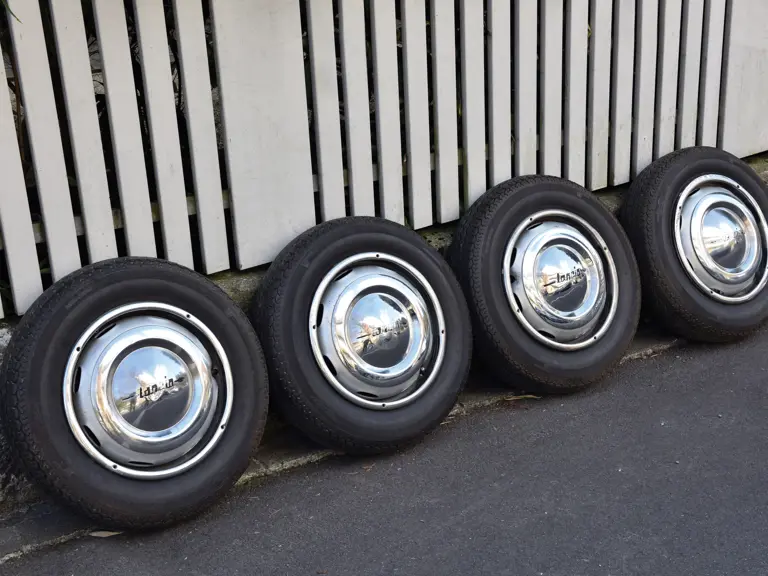
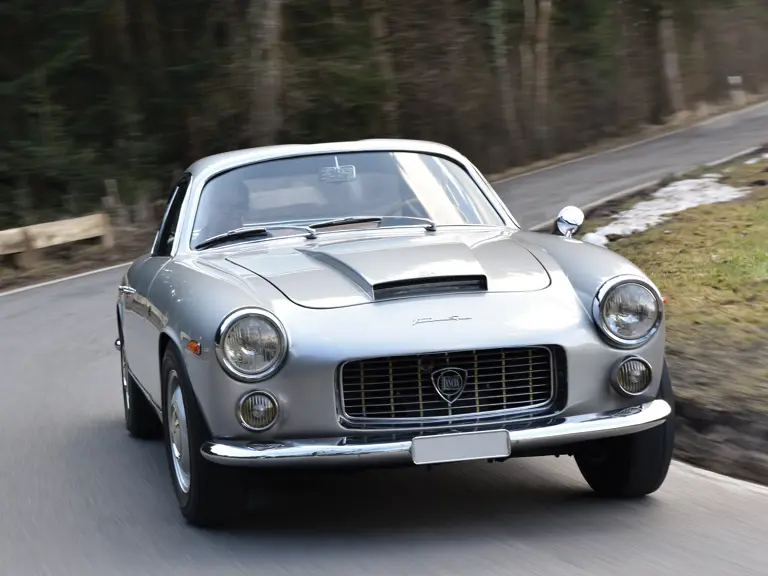
 | Cernobbio, Italy
| Cernobbio, Italy
